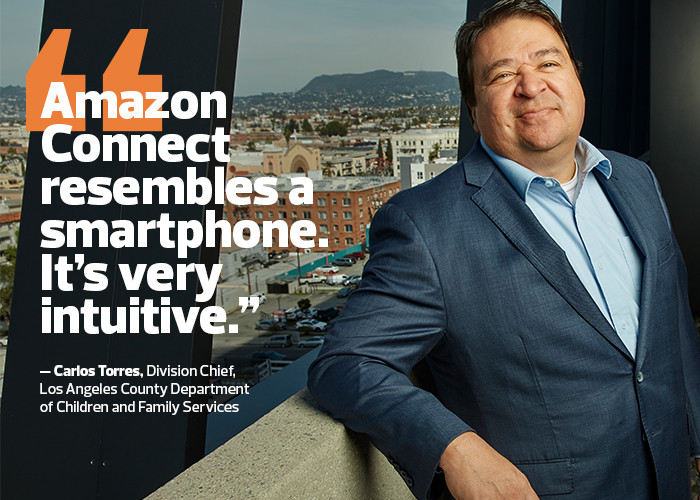Los Angeles Child Services Now Has an Intuitive Interface
In Los Angeles, the Child Protection Hotline was receiving over 220,000 calls every year, straining the department’s aging, on-premises infrastructure.
“The legacy technology is just very finicky. I don’t know if it’s coincidental, but every time it would rain, we would have issues,” Torres says.
For the upgrade, DCFS opted to use Amazon Web Services and migrated to Amazon Connect, a simple-to-use omnichannel contact center. The new system helps to streamline contacts, making it easier for families to connect with needed services and improving the process for county workers.
“Our objective was to figure out how we could use technology to make life easier for the social workers, so they can make life better for the community. And we wanted to enable people to work remotely,” says John Booher, data scientist and cloud developer for Los Angeles County. “Moving to AWS made that a lot easier.”
The cloud solution ensured that workers could make the transition seamlessly.
“When you pick a system, you have to pick a system that is quick and simple. Amazon Connect resembles a smartphone: It’s very intuitive,” Torres says.
For IT, the cloud solution also closed the talent gap at a time when the county was struggling to find people who could maintain the legacy technology.
Now, “it’s all maintained on the backend by AWS, and we only handle the front end, setting up the call flows,” Booher says. “And the interface for doing that is a lot easier.”
Overall, the new system “has allowed us to be faster and more efficient, and everything is more centralized,” Torres says. “Before, our recordings were over here in this bucket, and our calls were over there. Now, everything’s in one place.”
READ: New Jersey CTO Chris Rein explains benefits of the cloud for state agencies.
MNBenefits Ensures a Smooth Experience for Developers
Minnesota recently stood up MNBenefits, an online benefits application where citizens can apply for benefits, including assistance with food, housing and childcare.
Using the previous online system, “it took people 40 minutes to an hour to fill out an application. It was in English only, and it also did not support mobile users,” says Rashed Ferdous, a division manager with Minnesota IT Services. “We wanted to address some of these issues.”
The team leveraged a combination of technologies to improve the situation.
“We are using cutting-edge cloud computing technologies from Microsoft Azure Cloud, including state-of-the-art cloud containers built on OpenShift. That has helped our development team to be very flexible,” Ferdous says. “They have an easy-to-use back-end infrastructure. They are able to handle traffic and identify issues better.”













